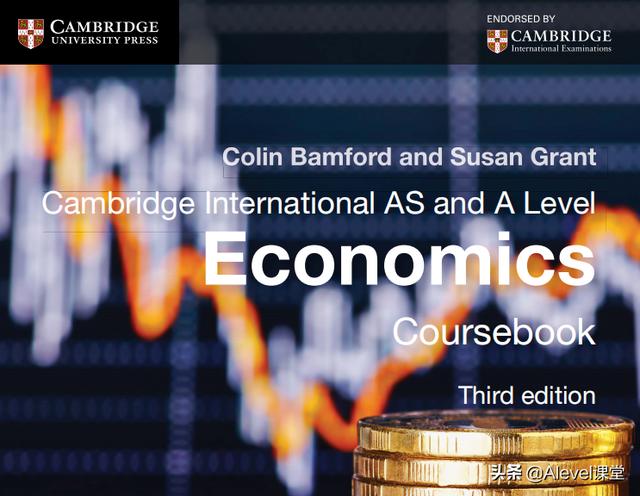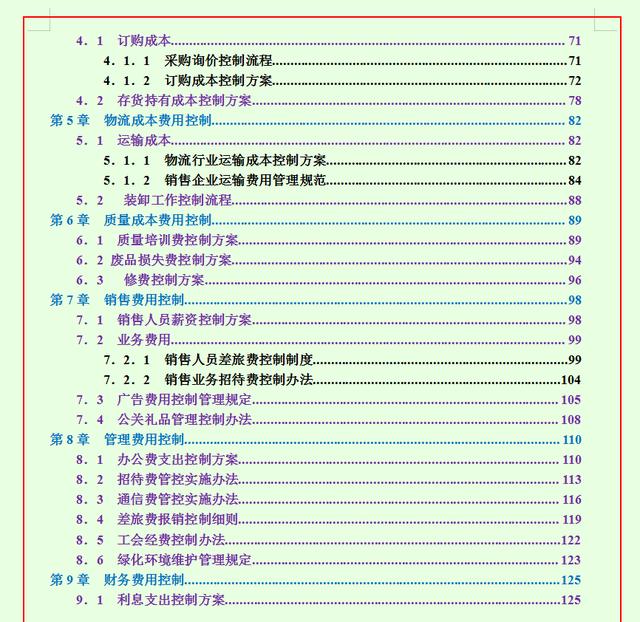alevel经济学难点(Alevel经济A学习笔记经济学弹性-需求价格弹性)

A-level economics revision guides and question banks covering labour markets, supply and demand, market structure and all core economics a-level topics.
以下内容我们会持续更新:

今天带给大家Alevel经济笔记是:
第三章:Elasticities—Price Elasticity of Demand
Elastic, inelastic and unitary demand弹性、非弹性和单一需求
So far we have simply looked at the formula and how to make various calculations.
Most importantly, though, you need to be able to interpret these numbers and explain what they mean.
到目前为止,我们只是简单地查看了公式以及如何进行各种计算。不过,最重要的是,您需要能够解释这些数字并解释它们的含义。
In the example with the CrispyChoc, the value of the elasticity was -2.5.
Using easier figures than the ones in the question, this means that for a 10% increase in the price of CrispyChocs, the quantity demanded will fall by 25%.
The proportionate change in demand is larger than the proportionate change in price. In other words, the demand for CrispyChocs is very responsive to a given change in price.
Goods and services like this that have an elasticity of demand greater than one, are said to have elastic demand.
I remember this by thinking of an elastic band. If an elastic band is very elastic, then it will be very responsive to a good tug.
在 CrispyChoc 的示例中,弹性值为 -2.5。使用比问题中的数字更简单的数字,这意味着 CrispyChocs 价格上涨 10%,需求量将下降 25%。需求的比例变化大于价格的比例变化。换句话说,对 CrispyChocs 的需求对给定的价格变化非常敏感。像这样具有大于1 的需求弹性的商品和服务被称为具有弹性需求。我想到了松紧带就记住了这一点。如果松紧带非常有弹性,那么它会对良好的拉力非常敏感。

If you managed the question about unleaded petrol, you will have found that it had an elasticity of -0.6.
Using easier figures than the ones in the question, this means that for a 10% increase in the price of unleaded petrol, the quantity demanded will fall by 6%.
The proportionate change in demand is smaller than the proportionate change in price.
In other words, the demand for unleaded petrol is not very responsive to a given change in price.
Goods and services like this that have an elasticity of demand less than one, are said to have inelastic demand.
In this case, the very stiff, or inelastic, band would not be very responsive to a good tug.
如果你处理了关于无铅汽油的问题,你会发现它的弹性为 -0.6。使用比问题中的数字更简单的数字,这意味着无铅汽油价格上涨 10%,需求量将下降 6%。需求的比例变化小于价格的比例变化。换句话说,对无铅汽油的需求对价格的特定变化不是很敏感。像这样的需求弹性小于1 的商品和服务被称为需求弹性不足。在这种情况下,非常僵硬或无弹性的带子对良好的拉力不会非常敏感。

Some goods have an elasticity of one. A 10% rise in their price results in a 10% fall in their demand. The proportions are the same.
Demand is neither elastic nor inelastic. These goods are said to have unitary demand.
有些商品的弹性为 1。价格上涨 10% 会导致需求下降 10%。比例是一样的。需求既不是弹性的,也不是非弹性的。据说这些商品具有单一需求。

Although unlikely in the real world, economists like to look at the extremes as they form useful benchmarks.
At one end, the elasticity of demand can be said to equal infinity.
This is known as perfectly elastic demand.
At the other end, the elasticity of demand can equal zero. This is known as perfectly inelastic demand.
This one is a little more realistic.
Looking at petrol, for instance, it is possible that, following a 5% increase in its price, the demand for the product remains unchanged because the good is such a necessity.
尽管在现实世界中不太可能,但经济学家喜欢观察极端情况,因为它们形成了有用的基准。一方面,需求弹性可以说是无穷大。这被称为完全弹性需求。另一方面,需求弹性可以为零。这被称为完全无弹性的需求。这个比较现实一点。例如,以汽油为例,在其价格上涨 5% 之后,对该产品的需求可能保持不变,因为这种商品是必需品。

The number line below summarises the above:
下面的数字线总结了上述内容:

You may be thinking, "what types of goods have elastic demand and what types of goods have inelastic demand".
Good question. See the section on 'the determinants of the value of the price elasticity of demand' for the answers.
你可能会想,“什么类型的商品有弹性需求,什么类型的商品没有弹性需求”。好问题。有关答案,请参见“需求价格弹性值的决定因素”部分。

Now you need to know how to draw demand curves that represent these various elasticities:现在您需要知道如何绘制代表这些不同弹性的需求曲线:

Notice that I've left the minus signs out. In the first diagram, any change in price (e.g. P1 to P2) causes the quantity demanded to remain unchanged (stays at Q1).
请注意,我忽略了减号。在第一个图中,价格的任何变化(例如 P 1到 P 2)都会导致需求量保持不变(保持在 Q 1)。
The second diagram is harder to explain.
If you can imagine that an infinitesimally small drop in price (so small that you can't see it on the diagram) has caused an infinite rise in demand (the horizontal demand curve goes on forever).
Then you can just about see that the horizontal demand curve represents infinite (or perfect) elasticity.
This horizontal demand curve is associated with firms in perfectly competitive markets (see the topic 'Market structure' for much more detail).
第二张图更难解释。如果您可以想象价格的无限小幅下跌(小到您在图表上看不到)导致需求无限增长(水平需求曲线永远持续)。然后您几乎可以看到水平需求曲线代表无限(或完美)弹性。这条水平需求曲线与完全竞争市场中的公司相关(有关更多详细信息,请参阅主题“市场结构”)。

The third diagram represents unitary elasticity.

The parabola shape means that, wherever you are on the curve, a given percentage change in the price of the good will result in an identical percentage change in the quantity demanded.
第三张图表示单一弹性。抛物线形状意味着,无论您在曲线上的何处,商品价格的给定百分比变化将导致需求量的相同百分比变化。
Most of the time the elasticity is somewhere between these extremes. The two diagrams below try to illustrate this:
大多数时候,弹性介于这些极端之间。下面的两张图试图说明这一点:

The first diagram shows a flattish demand curve, although it is not horizontal.
Notice that for a relatively small increase in price (from P2 to P3) the quantity demanded has fallen by a relatively large amount (from Q2 to Q3). %Qd > %P, and so demand is elastic.
第一张图显示了一条平坦的需求曲线,尽管它不是水平的。请注意,对于相对较小的价格上涨(从 P 2到 P 3),需求量下降了相对较大的量(从 Q 2到 Q 3)。%Q d > %P,所以需求是有弹性的。

The second diagram shows a very steep curve, although it is not vertical.
Notice that the increase in price is huge (from P4 to P5), but the fall in the quantity demanded is relatively small (from Q4 to Q5). %Qd < %P, and so demand is inelastic.
第二张图显示了一条非常陡峭的曲线,尽管它不是垂直的。请注意,价格上涨幅度很大(从 P 4到 P 5),但需求量的下降相对较小(从 Q 4到 Q 5)。%Q d < %P,因此需求缺乏弹性。

There is a catch, though. The value for the elasticity of demand changes as you move up or down the curve.
Obviously this is not true for horizontal, vertical or parabola demand curves, but it is for the majority of curves, which fall into the relatively elastic or relatively inelastic camps.
The diagram below explains this.
不过,有一个问题。需求弹性值随着曲线的上移或下移而变化。显然,水平、垂直或抛物线需求曲线并非如此,但大多数曲线都属于相对弹性或相对缺乏弹性的阵营。下图解释了这一点。

To make the maths easy, I've drawn a curve that is 45 degrees to the horizontal.
Where the demand curve hits the y-axis, the price is 20, and where the demand curve hits the x-axis, the quantity demanded is 20.
为了使数学更容易,我画了一条与水平线成 45 度的曲线。需求曲线到达 y 轴的地方,价格为 20,需求曲线到达 x 轴的地方,需求量为 20。

Now look at the change going on at point A. The price fell from 19 to 18 (a 5% fall, approximately) causing the demand to rise from 1 to 2 (a 100% increase).
This gives an elasticity of (-)20 which is very elastic.
现在看看 A 点发生的变化。价格从 19 下降到 18(大约下降 5%),导致需求从 1 上升到 2(上升 100%)。这给出了(-)20 的弹性,非常有弹性。
At point B, the price fall from 10 to 9 represents a 10% fall, and the resulting rise in the quantity demanded from 10 to 11 represents a 10% rise. The elasticity, therefore, is unitary.
在 B 点,价格从 10 下降到 9 代表下降 10%,而由此导致的需求量从 10 上升到 11 代表上升 10%。因此,弹性是单一的。
At point C, the price fell from 2 to 1 (a 50% fall) causing a rise in demand from 18 to 19 (a 6% rise, approximately). This gives an elasticity of (-)0.12, which is very inelastic.
在 C 点,价格从 2 下降到 1(下降 50%),导致需求从 18 上升到 19(大约上升 6%)。这给出了 (-)0.12 的弹性,这是非常无弹性的。

So, every part of the demand curve above (or to the left) of point B will be elastic, and every point below (or to the right) of point B will be inelastic.
Straight-line downward sloping demand curves are most elastic at the top. The elasticity then continually falls as one moves down the curve, reaching unitary elasticity somewhere in the middle.
Past this point, the curve becomes inelastic, reaching a value of zero when the curve hits the x-axis.
因此,需求曲线在 B 点上方(或左侧)的每一部分都是有弹性的,而 B 点下方(或右侧)的每一点都是无弹性的。直线向下倾斜的需求曲线在顶部最具弹性。然后,当一个人沿着曲线向下移动时,弹性会不断下降,在中间的某个地方达到单一弹性。超过这一点,曲线变得缺乏弹性,当曲线到达 x 轴时,值为零。

需求价格弹性值的决定因素
Earlier in this Learn It, we asked the question: "what type of goods have elastic demand, and what type of goods have inelastic demand?"
Well, this depends on a number of factors which are explained below:
在前面的Learn It中,我们问了一个问题:“什么类型的商品有弹性需求,什么类型的商品没有弹性需求?” 好吧,这取决于以下解释的许多因素:

Does the good in question have close substitutes?
This is probably the most important determinant. We were discussing petrol earlier.
As a car driver, I think it's safe to say that there is nothing else that I could put into my car that would make it go! There are no substitutes.
So, when the price of petrol rises, I am likely to buy more or less the same amount of petrol, unless I make a concerted effort to use public transport (unlikely, especially if one lived in the countryside) or give up the car (even more unlikely!).
Some consumers will make an effort to cut down on petrol, but taking the country as a whole, the fall in the demand for petrol following a given price rise will be relatively very small.
Petrol has very inelastic demand.
有问题的商品是否有相近的替代品?
这可能是最重要的决定因素。我们之前讨论过汽油。作为一名汽车司机,我认为可以肯定地说,没有其他东西可以放进我的车里了!没有替代品。因此,当汽油价格上涨时,我可能会购买或多或少相同数量的汽油,除非我齐心协力使用公共交通工具(不太可能,特别是如果一个人住在农村)或放弃汽车(更不可能!)。一些消费者会努力减少对汽油的使用,但从整个国家来看,价格上涨后对汽油的需求下降幅度相对较小。汽油的需求非常缺乏弹性。

You can probably think of lots of examples of markets where there are many firms all competing with each other selling similar products.
Just think how many substitutes there are for CrispyChocs when choosing a chocolate bar in a newsagent.
This means that the demand for CrispyChocs is very elastic; for a given rise in the price of a CrispyChoc the fall in demand will be proportionately larger.
The width of definition of a product will also affect the elasticity.
CrispyChocs may well have elastic demand, but the elasticity of 'food' in general will be very inelastic.
您可能会想到很多市场示例,其中有许多公司相互竞争,销售类似产品。想想在报刊亭选择巧克力棒时有多少 CrispyChocs 替代品。这意味着对 CrispyChocs 的需求非常有弹性;对于 CrispyChoc 价格的给定上涨,需求下降将成比例地更大。产品的定义宽度也会影响弹性。CrispyChocs 很可能具有弹性需求,但“食物”的弹性通常非常缺乏弹性。

What is the time period in question?
Demand for any good tends to be more inelastic in the short run and more elastic in the longer run.
Looking back at the example of petrol, when oil prices rose sharply in the mid-70s, the immediate affect on demand was small.
People still needed petrol for their cars; those who used oil dependent heating couldn't use another fuel.
As time went by, though, people could look into buying more fuel-efficient cars, or heating systems that used a different fuel (like gas central heating, for example).
As time goes by, consumers are more likely to be able to react to changes in the price of various goods by changing habitual spending patterns.
有问题的时间段是多少?
对任何商品的需求往往在短期内更缺乏弹性,而在长期内则更具弹性。回顾汽油的例子,当油价在 70 年代中期急剧上涨时,对需求的直接影响很小。人们的汽车仍然需要汽油;那些使用依赖油加热的人不能使用另一种燃料。不过,随着时间的推移,人们可能会考虑购买更省油的汽车,或使用不同燃料的供暖系统(例如燃气中央供暖)。随着时间的推移,消费者更有可能通过改变习惯性消费模式来对各种商品价格的变化做出反应。

How much of one's income is spent on the good in question?
Consumers will be more sensitive to price changes of goods that will cost them a lot of money.
One of the biggest purchases a consumer is likely to make is a new car. This represents a large proportion of one's income.
The consumer will be more sensitive to price changes for 'big ticket' items; demand for these goods will be relatively elastic.
On the other hand, if a good represents a very small proportion of one's income, its demand will be relatively inelastic.
A box of matches tends to cost around 10p. If the price rose to 15p, which is a huge 50% rise, the product is still so cheap that most people will buy them anyway.
一个人的收入中有多少花在了所讨论的商品上?
消费者对商品的价格变化会更加敏感,这会花费他们很多钱。消费者最有可能购买的其中一项是新车。这占一个人收入的很大一部分。消费者将对“大件”商品的价格变化更加敏感;对这些商品的需求会比较有弹性。另一方面,如果一种商品在一个人的收入中所占的比例很小,那么它的需求就会相对缺乏弹性。一盒火柴的价格往往在 10 便士左右。如果价格上涨到 15 便士,即 50% 的巨大涨幅,那么产品仍然如此便宜,以至于大多数人都会购买。

Is the good in question a necessity or a luxury?
It can be argued that necessities have relatively inelastic demand, whereas more luxurious goods are more elastic in nature.
I should think most peoples' demand for basic foodstuffs remains fairly constant regardless of changes in their prices.
On the other hand, people will be more price sensitive if a good is not essential.
If the price for smoked salmon rose, there would probably be a proportionately larger fall in demand.
Smoked salmon is seen as a treat to most people, a luxury rather than a necessity.
所讨论的商品是必需品还是奢侈品?
可以说,必需品的需求相对缺乏弹性,而奢侈品的需求弹性更大。我应该认为,无论价格如何变化,大多数人对基本食品的需求都保持相当稳定。另一方面,如果商品不是必需品,人们会对价格更加敏感。如果烟熏三文鱼的价格上涨,需求可能会相应地出现更大的下降。烟熏三文鱼对大多数人来说是一种享受,一种奢侈品而不是必需品。

今天的Alevel经济笔记就更新到这里,如果大家对Alevel经济学感兴趣可以关注我们,
关于Alevel经济笔记第三章:Elasticities后续的更新计划如下:

之前更新:
Alevel经济学习A*笔记:成本和收入之成本及其曲线 Alevel经济A*学习笔记:弹性-需求公式的价格弹性 Alevel经济学习A*笔记:成本和收入之规模经济
,免责声明:本文仅代表文章作者的个人观点,与本站无关。其原创性、真实性以及文中陈述文字和内容未经本站证实,对本文以及其中全部或者部分内容文字的真实性、完整性和原创性本站不作任何保证或承诺,请读者仅作参考,并自行核实相关内容。文章投诉邮箱:anhduc.ph@yahoo.com






